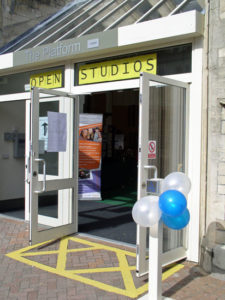 Guest article by artist/author: Benoit Philippe
Guest article by artist/author: Benoit Philippe
Recently, I took part in a local open studios event, in a public space, together with seven other artists and I tested a number of strategies to bring visitors into my art booth and keep them there to look at my art.
The tips below will be helpful for artists taking part in an art fair or open studio.
1. Make your mailing list work. This one is obvious, but requires some planning. You want to send an email one month in advance inviting people to pencil the dates in their diary; then send an invitation again one week before and a last reminder two days before the actual event. It is better to make the invitation personal if you can. People receiving a personal note are more likely to come. Leverage your mailing list by asking the receiver to forward your email invitation to their friends who could be interested.
Make it easy for your visitors to come by covering the Who, What, When and Where of your art event. If the location is not easy to find, add a map or a link to Google Map. For the open studios, I inserted into my invitation a photograph of the building where the exhibition took place. Many people told me that it was helpful to jog their memory and was much more meaningful to them than the address of the venue.
2. Organize some cross-promotions with other artists. If you are sharing a venue with other artists, each artist will benefit from other artists’ invitations. But it does not stop here. If the event is happening in several venues at the same time (often the case for an open studios or an art trail event), get in touch with artists in nearby venues and agree that you will send visitors to each other’s venue. A very effective way to do that is to prepare a leaflet with a map and the information people need to get to the next venue.
3. Be creative with signage. Balloons are a great way to get attention. A bunch of colored balloons on each side of the entrance of the exhibition venue will create a festive mood and draw the attention of passers by. What I also did for the open studios was to print the word OPEN STUDIOS on bright yellow cards, one letter per page, to put over the entrance. Make sure you talk to the venue manager as some venues have stringent rules on what they can and cannot display.
4. Take turn to paint outside. People walking in the street will notice an artist painting or drawing and will come and have a peek. At that point, it is a simple matter of inviting them inside to have a look at the art on show.
5. Sell the upsides of the venue. The venue where I was exhibiting had a wonderful café, making real cappuccinos at unbeatable price. I made sure I shared this information with all my visitors. This way, they could take a break and stayed longer in the building. Several visitors came back for a second round of art viewing after this welcome break.
6. Open-up the space. If you can set-up your exhibition space the way you want, try to avoid “boxing” your art with exhibition panels. Access to your art should be easy and circulation around your exhibit should flow. If you put a table across, people are not likely to go behind it. Can people see some of you your art from the entrance of the exhibition venue? If you paint on the day, can people stand behind you and see what you are doing?
7. Set-up a demonstration. Visitors love to meet artists and talk to them about their art and their technique. Take advantage of this by painting or creating a piece of work on the day. Once you get visitors’ attention, you can ask about their interests, answer any question they have on your art and your technique and invite them to browse through your exhibit.
8. Sweets, sweets and bribery. This strategy is so simple yet effective. It works well with families. Children can drive visitors away (“Mum, I am bored, let’s go home”), unless there is something to keep them happy. A few bowls of sweets on a table work miracle. Once the children spot them, parents are not far behind. Invite the children (and their parents) to help themselves to sweets. After that, parents have all the time and quietness they need to look at your art.
9. Engage with visitors. This one is difficult to get right. On one hand, once you talked to them, people will have a hard time passing your booth without having a look around. On the other hand, you want to leave them some space. Nobody likes a pushy sales person when we go shopping, but we all appreciate polite and available staff… Make sure you tell visitors you are available if they have any question.
10. Ask people to sign your visitors’ book. This is a good way to start or to prolong a conversation. It is also essential if you want to grow your mailing list and follow-up after the show.
Benoit Philippe is a French artist living in Swindon (United Kingdom) who paints with oil, watercolor and pastels. He is the author of the free eBook “Creative Exercises for Artists”, available from Slideshare. Please visit www.benoitphilippe.com to see Benoit’s work and My French Easel blog to read his art articles. To stay in touch, you can join him on Twitter @myfrencheasel.
*****
I thought you all might like to see a few of Benoit’s lovely paintings. Thank you sharing for these great tips with us Benoit! See you on Twitter. 🙂
If you found this post helpful, please be sure and check out these great articles:
How to ‘Jump Start’ Your Art Career
10 Important Things Every Aspiring Artist Should Know: Part 1
5 Benefits of Local ‘Co-Op’ Gallery Membership
How to Prepare for Gallery Night: Tips & Advice
Newsletter Art Marketing Tips That Work!
Learn the Two Biggest Mistakes Artists Make with Social Media
One Simple and Effective Way to Show the World You are a Pro
5 Small Business Mistakes To Avoid


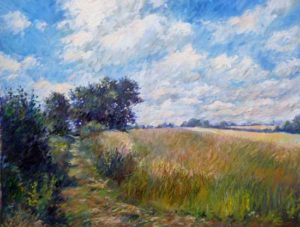

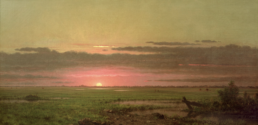
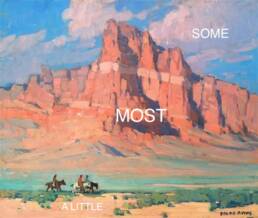
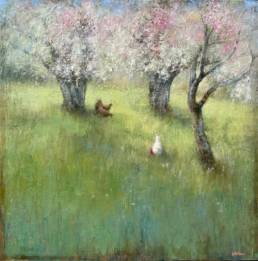
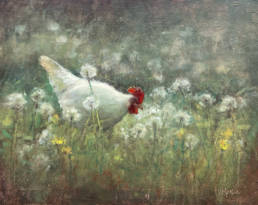
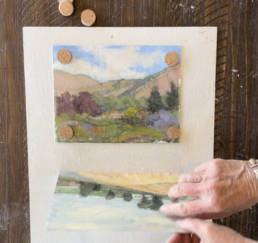
excellent article. thanks for posting it.
Thanks Tokyo Art Guy…glad you enjoyed it!
Lori 🙂
Thanks for the useful information.
I’m going to try the candy idea at our next show this weekend.
I have two events planned (fair in Paris and then in Nice, January and March). I will try to put balloons to see if it attracts attention.
This a a great article!
Hello Lori!
Great post! Would you be interested in re-posting this article on another art blog? We have have a “tips for artists” section on AC’s blog located at artisticallyconnected.wordpress.com and we are always looking for helpful articles like yours.
Keep up the great work 🙂
Hi Brittany-
Yes, you may repost this, but I would like you to change the title for SEO purposes. Also, at the beginning of the article please state this > The following article was originally posted on http://FineArtTips.com. Then please link to FineArtTips.com once more at the end and send me the link to the article once it is published. You can email me the link lori@lorimcnee.com and any other questions you might have.
Thanks for liking this post. I hope your readers find it useful. I appreciate your comment and visit!
Cheers-
Lori 🙂